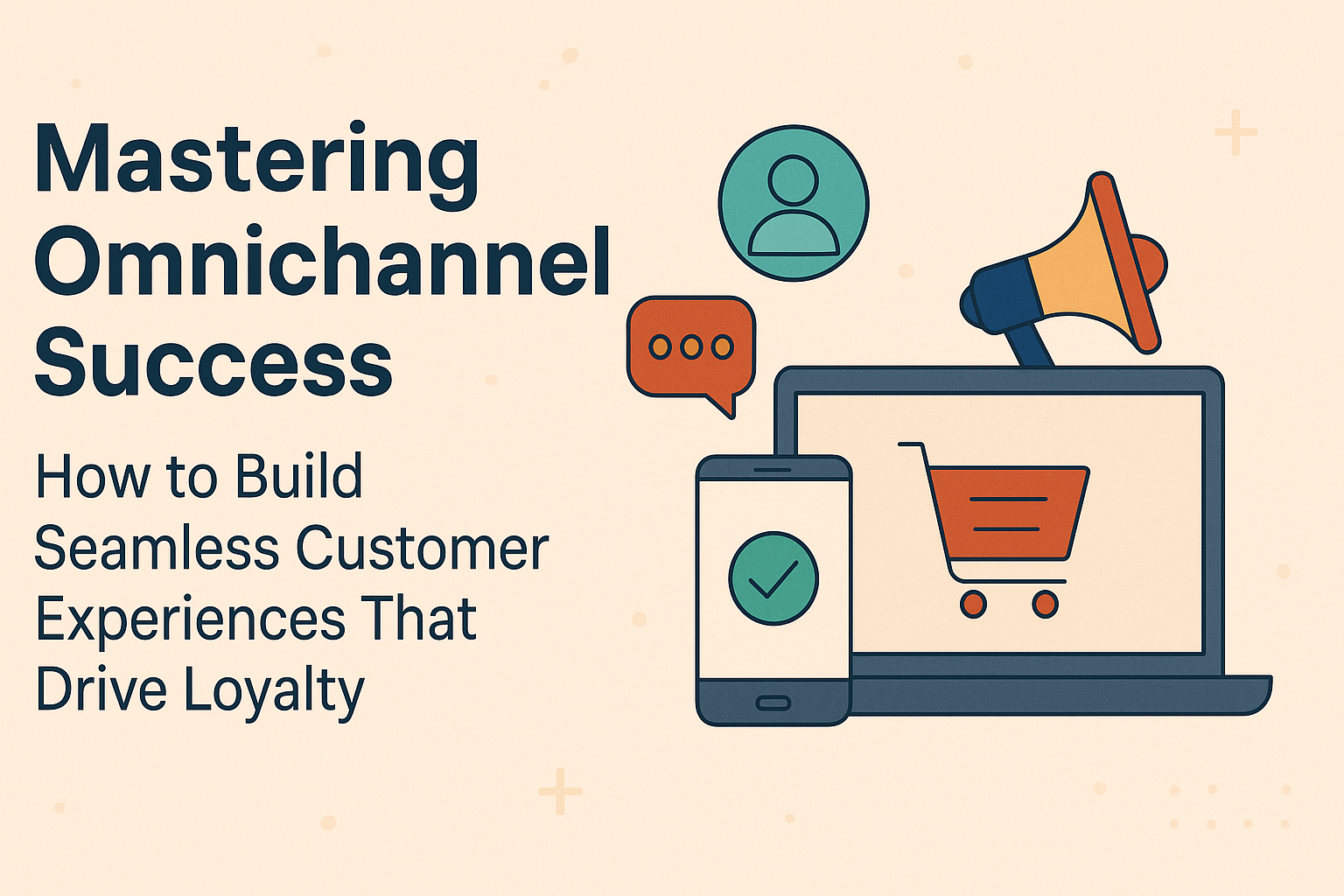
Introduction
Let’s face it—customers today expect magic. They want to browse your site on their phone, ask a question on Instagram, pick up their product in-store, and return it via email support—all without a single hiccup. That’s where omnichannel experiences come into play.
But omnichannel isn’t just about being everywhere. It’s about being everywhere with purpose—seamlessly. In this guide, we’ll break down how to create frictionless, connected experiences that not only engage customers but also earn their loyalty long-term.
Understanding Omnichannel vs Multichannel
What’s the Real Difference?
Multichannel is like juggling—each ball (or channel) moves on its own. Omnichannel? It’s more like an orchestra. All channels work in harmony to create a beautiful symphony of customer engagement.
Why Omnichannel Wins Every Time
Because customers don’t care what channel they’re on—they care about continuity. If your social media team and customer service reps aren’t on the same page, your customer notices. And that’s a deal-breaker.
The Psychology Behind Omnichannel Engagement
How Customer Expectations Have Evolved
Gone are the days when patience was a virtue. Today, speed, personalization, and consistency win hearts. If one channel fails, you’ve lost trust—maybe forever.
The Power of Personalization and Convenience
Think of it like Netflix. It remembers your preferences and picks up where you left off—whether on TV, mobile, or tablet. That’s omnichannel personalization at its finest.
Core Elements of a Winning Omnichannel Strategy
Unified Brand Message
Every interaction—be it a tweet or a support email—should scream your brand’s personality. Consistency is confidence.
Consistent Customer Experience Across Channels
If your mobile app feels like a dream but your website is a nightmare, it breaks the experience. Keep it seamless.
Real-Time Customer Data Integration
A centralized database ensures your support team knows what your marketing team knows. That’s gold.
Flexible Fulfillment and Support Options
Buy online, pick up in-store, exchange in app? That’s what convenience looks like in 2025.
Mapping the Omnichannel Customer Journey
Awareness to Advocacy
From the first Instagram ad to the glowing product review—they’re all part of one journey. Map it, understand it, optimize it.
Breaking Down Silos Between Teams
Marketing, sales, support, product—they should all be sipping from the same data cup.
Essential Channels to Cover in Omnichannel Marketing
Social Media
Not just for memes. It’s your first impression, your support line, and your feedback loop.
Email and SMS
Still two of the most effective tools—especially when used to personalize and re-engage.
In-store and Offline Touchpoints
Yes, offline matters. The physical experience should reflect the digital—and vice versa.
Website and Mobile App Sync
Don’t make users start over. Let them switch devices without skipping a beat.
Tools and Tech That Power Omnichannel Experiences
CDPs and CRMs
Customer Data Platforms and Customer Relationship Management tools are the spine of your strategy.
AI and Automation
AI handles scale. Chatbots, recommendations, and dynamic content are your 24/7 employees.
Analytics and Attribution Models
Know what works. Kill what doesn’t. Measure across the full journey—not just channels.
Top Brands Nailing Omnichannel Experiences
Starbucks
Their app, loyalty program, and store experience are so synced it feels like magic.
Sephora
Try products virtually, get personalized recs, and redeem in-store. Beauty meets tech.
Nike
Order online, customize your shoes, get them delivered or picked up from your favorite store.
Challenges Brands Face (and How to Overcome Them)
Data Silos and Legacy Systems
Solution: Invest in integration. APIs, middleware, cloud—whatever it takes.
Lack of Internal Collaboration
Solution: Cross-functional teams, shared KPIs, and unified goals.
Measurement and ROI Issues
Solution: Focus on customer lifetime value, not just channel conversions.
The Role of AI and Predictive Analytics in Omnichannel
Hyper-Personalization at Scale
AI knows what your customer wants before they do—and serves it up in the right channel.
Predicting Next-Best Actions
From sending reminders to offering discounts—it’s like having a digital sixth sense.
Customer Feedback: The Secret Sauce to Optimization
Listening Loops
Use surveys, reviews, and chats to understand where your journey breaks down.
Using Feedback to Improve Cross-Channel Experience
Turn complaints into insights. Fix gaps. Celebrate wins.
Future Trends in Omnichannel Engagement
Voice Commerce
“Hey Alexa, reorder my skincare set.” It’s happening.
AR/VR Shopping Experiences
Try before you buy—from your couch. Wild, right?
Proactive AI Assistants
Think less reactive support, more “Hey, you might need this…”
Actionable Steps to Start Your Omnichannel Journey
Audit Your Current Customer Experience
Where do you lose customers? Fix that first.
Choose the Right Tech Stack
Don’t overcomplicate. Start with scalable, integrable tools.
Start Small, Scale Smart
Pilot with a few channels. Perfect the process. Then expand.
Conclusion
Omnichannel isn’t a luxury anymore—it’s the expectation. Today’s customers float across platforms, devices, and timelines, and they expect brands to keep up. When done right, omnichannel isn’t just convenient; it’s unforgettable. Ready to build seamless experiences your customers will love? Start now—because loyalty doesn’t wait.
FAQs
1. What’s the main goal of an omnichannel strategy?
To create a unified, seamless experience across all customer touchpoints, improving satisfaction and loyalty.
2. How do I know if my brand is truly omnichannel?
If your customer can switch channels without restarting their journey, and if your teams work off the same data—congrats, you’re omnichannel.
3. What tools are must-haves for an omnichannel approach?
CRMs, CDPs, marketing automation platforms, AI tools, and real-time analytics software are crucial.
4. Is omnichannel only for big brands?
Nope! Startups and SMEs can use cost-effective tools and strategies to deliver powerful omnichannel experiences too.
5. How long does it take to implement an omnichannel strategy?
It depends on your current setup, but with the right team and tools, you can start seeing changes in as little as 3-6 months.

